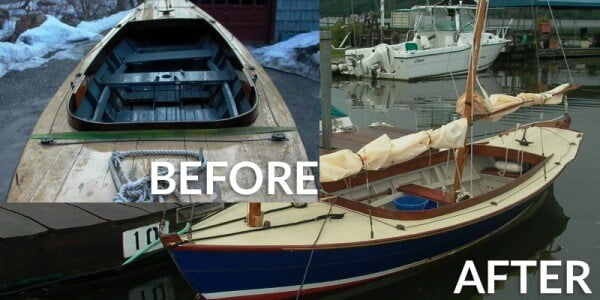With the summer boating season on the horizon, it is time to ready your boat by making sure everything works properly and  doing the proper maintenance to ensure safety and fun. One of the biggest issues that put a damper on summer boat outings is the presence of holes. Choosing the proper boat sealant for holes is crucial in the process of creating a lasting bond. Picking the wrong sealant causes, a host of different problems that have the potential to not only ruin enjoyment, but also can make the boat inoperable.
doing the proper maintenance to ensure safety and fun. One of the biggest issues that put a damper on summer boat outings is the presence of holes. Choosing the proper boat sealant for holes is crucial in the process of creating a lasting bond. Picking the wrong sealant causes, a host of different problems that have the potential to not only ruin enjoyment, but also can make the boat inoperable.
A proper sealant keeps water out and a good marine sealant must be waterproof, flexible, UV resistant, and chemical resistant (must be able to withstand exposure to fuel, and other solvents found in boating materials). There are three basic types of marine sealants and adhesives – selecting the correct one for the hole will provide the bonding agent necessary for proper adhesion.
- Polyurethane-based sealants can be used on a variety of surfaces. Known for their permanent, strong adhesion, these sealants can be used both above and below the waterline. Made from the metabolic element Urea, most marine polyurethane sealants in today’s marketplace are usually made synthetically. Their acidic compounds come from combining the elements of hydrogen, nitrogen, carbon, and oxygen into long molecular chains. Due to the length and strength of these chains, it makes them extremely durable.
Polyurethane-based sealant numerous uses make it one of the most widely used products when sealing holes. They can be used along certain seams for long lasting bonds. They should not be used to seal deck seams on Teak or other wooden decks, on ABS and Lexan plastics to fiberglass, ABS and Lexan plastics to wood, plastic hardware to fiberglass, and plastic hardware to wood. The most popular brands include 3M 4200 and 5200, SilkaFlex 291, 292, 295, and 296. The cure quickly and under regular wear and tear last around 10 years.
- Polysulfide-based sealants make the best general marine purpose sealants. They have both the flexibility and elasticity of the three most popular sealants. Like Polyurethane, they can be used both above and below the waterline of the boat. They can adhere to teak, and make an excellent sealant to for hardware, bedding wooden items.
Polysulfide sealants should not be used for filling ABS and Lexan plastics to fiberglass, ABS and Lexan plastics to wood, plastic hardware to fiberglass, plastic hardware to wood, and glass to vinyl. The main drawback to these sealants is that they do not well as an adhesive to plastic like acrylic and carbonate materials. They work exceptionally well on nylon, acetyl, delrin, and marelin fittings. The bestselling polysulfide sealant for boat holes is BoatLife LifeCalk. The average life expectancy once used is approximately 20 years.
- Silicone-based sealants create great bonds when you use them correctly. One of the most popular uses for these sealants includes gasket materials. They should only be used for above waterline purposes. They can also be useful when sealing holes in bedding ports and plastic parts. You should never use them on deck seams, underwater wooden boat hull seams, and sandable or paintable parts. There is only one silicone sealant recommended for use on boats and that is Dow 795. Silicone can be useful when sealing portable water tanks, but you should only use NSF approved silicone sealants, to ensure that there is no presence of toxic chemicals in the silicone. Certain silicones must be acid cured and never used on metal. With fast drying times, and a life expectancy of 20 years, take caution when using silicone sealers on boat holes.
Another marine adhesive sealant is gaining in popularity among boating enthusiasts and in marine stores, Butyl Rubber Glazing tape. It is a versatile sealant, but has a weak adhesion but has great elasticity. It is yet to be seen how long this type of sealant lasts.
It is important to use the proper sealant on the specific holes that need to be repaired on your boat. Using the wrong sealant cannot only be dangerous, but it can cost a lot of money to repair the damages that the wrong sealant can create. So take heed, when it comes to sealants. It is better to use the correct sealant than to end up bailing water out of the boat while out on the water.
The Sani-Tred Solution
Boat and Yacht enthusiasts have found Sani-Tred to be a secret weapon for repairing and waterproofing their investment. Great for decks leaves a rubberized, high traction, waterproof surface to walk on. Can also be used for sealing and coating hulls resists saltwater and chemicals. Visit https://sanitred.com/boat-deck-coating-repair/ or call 1-866-784-3308 to learn more.


